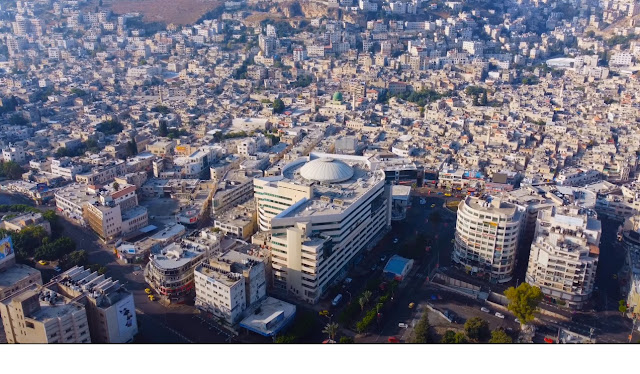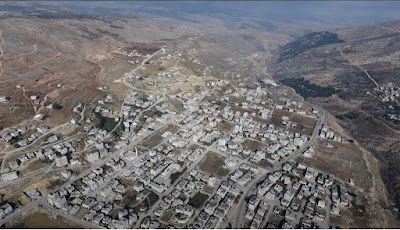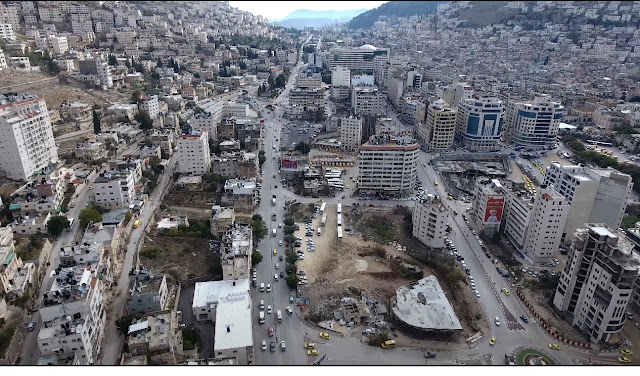City of Nablus, Palestine مدينة نابلس فلسطين
Nablus
(Arabic نابلس, Hebrew שכם, Shechem) is a huge city (populace,
roughly 300,000) inside the Palestinian Domains, in the Focal Good countries of
the West Bank, exactly 63 km north of Jerusalem.
Nablus is perhaps
of the most seasoned city on the planet, conceivably settled a long time back.
It was classified "Shechem" by its Canaanite and Israelite occupants.
Shechem was the primary capital of the northern old Israelite realm. The Romans
constructed another city (Flavia Neapolis, to pay tribute to Flavius Vespasian)
close to Shechem. The name Nablus comes from Neapolis. The old city of Nablus
is on the site of Neapolis, yet in current times the city has developed to
incorporate the site of Shechem too.
Nablus is
recognized by its area in a thin valley between the two mountains Gerizim and
Ebal. This makes for a great view when you are in the city.
Found decisively between two mountains with a wealth of regular springs, it has been governed by numerous realms throughout its long history. In the Old City, there are various huge archeological destinations tracing all the way back to the fifteenth hundreds of years.
Nablus is likewise
home to the world's littlest strict local area: the Samaritans; an ethno-strict
gathering of the Levant that has an equal yet separate religion to Judaism. A
little more than 700 individuals live on Mount Jerzim, where they unreservedly
practice their customs and carry on with a dynamic social existence. With all
its uniqueness, normal magnificence and rich history, Nablus is viewed as a
significant Palestinian business and social focus, and the capital of the
Nablus region, with a populace of 348,000.
Schools were laid
out in the center of the nineteenth hundred years during the short rule of
Ibrahim Pasha, however kept up with their reality before very long when the
Ottomans recovered control of the locale. On 11 July 1927 the town experienced
a significant tremor. A large part of the ensuing harm to structures was rarely
fixed, and the ruinous state of a considerable lot of them might well have
urged the occupants to move outside the old city to fabricate their new houses,
albeit another structure toward the north and west of the old city had
previously been embraced before 1927. The appearance of the engine vehicle has
expanded displacement to the slants of Mount Gerizim and Mount Ebal, where new
streets permit vehicles the simple access denied them in the uneven and mostly
ventured roads of the old city.
During the English
Order (1917-1948), Nablus turned into the center of Palestinian Middle
Easterner Patriotism, and it was the focal point of opposition against the
English. After the 1948 Bedouin Israeli conflict Nablus went under Jordanian
rule, and 2 exile camps were worked close to the city. In 1967, Nablus was
involved by the Israeli armed force, the occupation harmed the framework of the
city. The hard long stretches of the occupation made a lot of harm the city, 3
evacuee camps were added to oblige individuals who escaped to the city. Eight
towns and 43 towns. It faces numerous hindrances to its advancement because of
infringing settlements. The Nablus region is home to twelve Israeli settlements
and some more "stations," the Israeli name for settlements that are
not legitimate under Israeli regulation. The subsequent absence of accessible
assets joined with limitations to development, destitution and joblessness have
lead to the accompanying issues:
Absence of
foundation to develop farmland.
Restricted open
positions.
Deficient water
organizations, driving families to utilize pay to buy water for family use.
Disintegrating
schools and medical clinics.
Barely any spaces
or open doors for socialization and amusement.
Nablus was attacked
and involved in 2002 during the Subsequent Intifada, and has been assaulted
regularly from that point onward. Nablus has an especially high centralization
of open enemy of Israeli opinions for a significant West Bank city; you can see
numerous dedications to Palestinians killed during Israeli assaults in the old
city, and the Israeli Guard Power (IDF) and Palestinian assailants once in a
while conflict in certain pieces of more noteworthy Nablus, for example, the
outcast camps. There are many harmed structures and flotsam and jetsam filled
fields around Nablus, the consequence of past Israeli flying besieging, yet the
occupants of Nablus have been buckling down on fixing their city and there's
less and less noticeable harm consistently. Israeli limitations on the city are
for the most part looser than they used to be, and a visit to Nablus in the
daytime is a protected and advantageous excursion.
RECONNECTING Nearby People Group TO CULTURE THROUGH Versatile
The noteworthy
focus of Nablus (Palestine) keeps on flourishing in spite of developing
difficulties to its setting and personality. Since the 1990's, the city has
confronted expanded improvement strain from the extension of contiguous
metropolitan blocks, requiring the reception of a culture-driven metropolitan
improvement strategy that supports defending the city's particular social
credits.
The social
protection, the executives and advancement strategy in Nablus has zeroed in on
the versatile reuse of deserted and harmed structures to help the neighborhood
local area. The prestigious old caravanserai of Khan Al-Wakala was restored to
turn into a blended utilized space offering a public field for occasions,
convenience and social exercises. In the restored family places of AbdelHadi,
Hashim and Al-Amad, neighborhood foundations have offered instructive
administrations for youth and youngsters, like a kindergarten, and music and
language classes. Moreover, through an exhaustive preservation, the executives
and exploration project, the unwanted Shikmu (Tell Balata) site, the earliest
settlement in the Nablus region, was changed into an archeological park with an
understanding and guest's middle. The undertaking has empowered the nearby
local area to reconnect with the site and reinforce the neighborhood economy.
The social resources of Nablus have been areas of strength for a for the city's
reasonable turn of events, and such mediations have enabled neighborhood
networks, people and gatherings to communicate and better grasp the huge job of
culture in their lives.
Nablus, Palestine, and Balata Camp
Nablus is the
second city of the West Bank in populace, with a fine present day place and a
long history. In antiquated times the Roman Ruler named it the "New
City" — that is "Neapolis," or "Nablus."
Individuals of
Nablus are moderately moderate. What's more, submerged in this dynamic city's
business upheaval, I found basically being essential for the scene a strong
encounter.
Renowned (or
famous) for its battling soul, the city has walls dried up with political
banners. These youthful neighborhood men — thought about psychological
militants, or political dissidents, contingent upon your point of view — are
generally in Israeli penitentiaries or dead. However, they live on with banners
that praise their obligation to Palestinian autonomy. As these banners blur,
I'm trusting that what appears to me like another soul of peacefulness to
resolve the locales concerns mirrors an extremely durable change in Palestinian
system.
A common image all
through Palestine is the key. Numerous towns show a major key as a sign of a
major issue here: exiles, the huge number of Palestinians who were uprooted
with the formation of Israel in 1948. Here in the West Bank — more than 60
years after the fact — numerous outcast camps are as yet loaded up with
Palestinian families who escaped when their territory became
"Israel."
Right up to the
present day, these individuals — whose guardians and grandparents, thinking
they'd be getting back soon, got their keys and escaped back in 1948 — treasure
those old keys and are glad to recount their story.
Among the numerous
displaced person camps in the West Bank, the greatest — with north of 20,000
individuals — is Balata, right beyond Nablus. The 10-foot-by-10-foot platting —
checking where tents were posted back in 1948 — makes due. Just now, the tents
are gone, supplanted by multi-story cinderblock apartments.
All through the
world, there are outcast camps like this. Meandering these paths, I can't
envision living in such thick populace… the absence of security… being a parent
with youngsters and minimal expenditure… the disappointment of an unsure
future.
For more than 60 years, the Unified Countries has kept a quieting and supportive presence. At the point when the UN-run and - financed school lets out, the roads flood with kids glad to rehearse their English with an interesting voyager wandering into their reality. Life happens in these camps, as displaced people sit tight for a goal to their predicament.









0 Comments
if you have any doubts, please let me know.